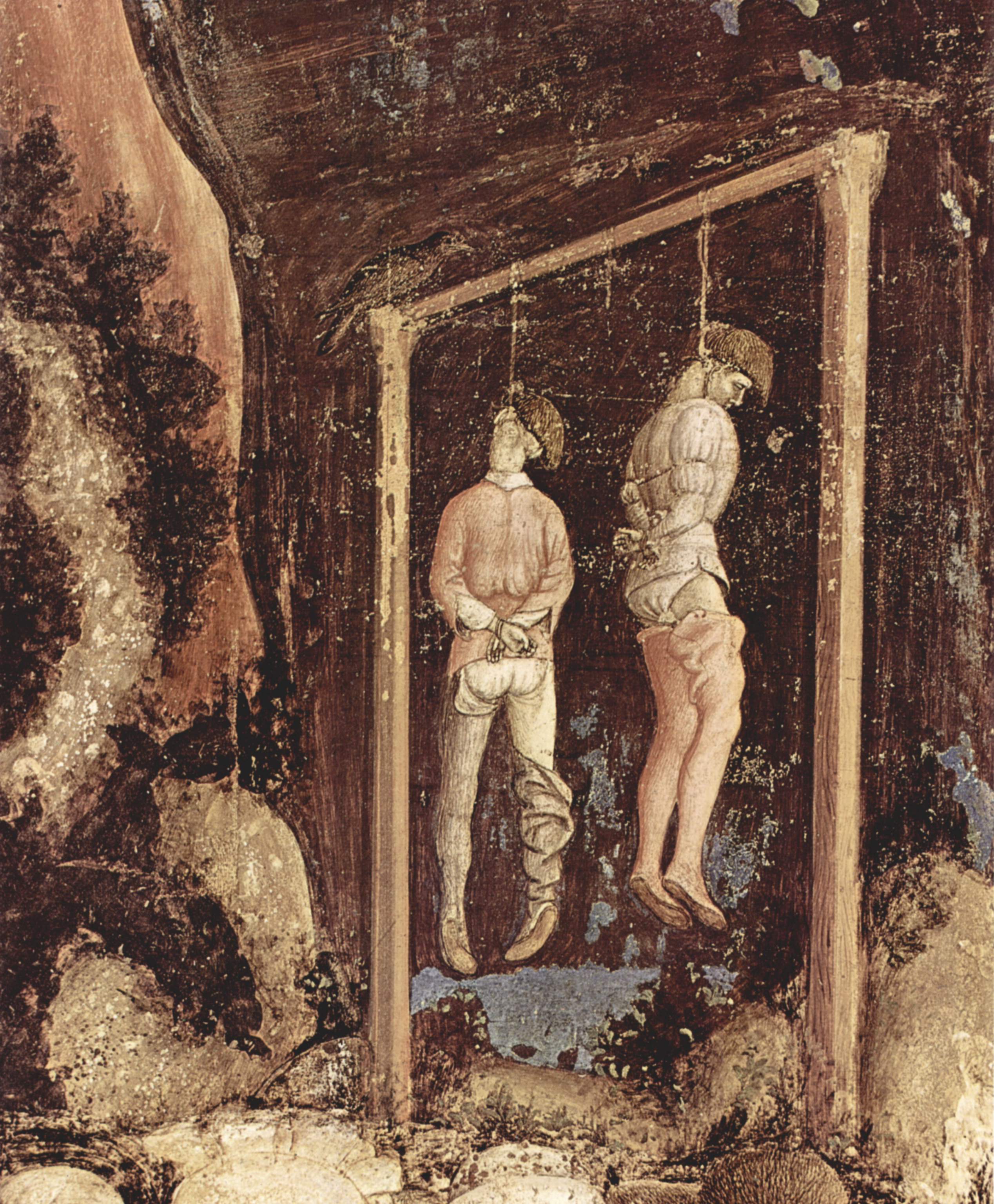
Hanging
Hanging is killing a person by suspending them from the neck with a noose or ligature. Hanging has been a common method of capital punishment since the Middle Ages, and is the primary execution method in numerous countries and regions. The first known account of execution by hanging is in Homer's Odyssey.[1] Hanging is also a method of suicide.
"Death by hanging" redirects here. For the film, see Death by Hanging.The past and past participle of hang in this sense is hanged, not hung.
As human sacrifice[edit]
There are some suggestions that the Vikings practiced hanging as human sacrifices to Odin, to honour Odin's own sacrifice of hanging himself from Yggdrasil.[24] In Northern Europe, it is widely speculated that the Iron Age bog bodies, many who show signs of having been hanged were examples of human sacrifice to the gods.[25]
A hanging may induce one or more of the following medical conditions, some leading to death:
The cause of death in hanging depends on the conditions related to the event. When the body is released from a relatively high position, the major cause of death is severe trauma to the upper cervical spine. The injuries produced are highly variable. One study showed that only a small minority of a series of judicial hangings produced fractures to the cervical spine (6 out of 34 cases studied), with half of these fractures (3 out of 34) being the classic "hangman's fracture" (bilateral fractures of the pars interarticularis of the C2 vertebra).[26] The location of the knot of the hanging rope is a major factor in determining the mechanics of cervical spine injury, with a submental knot (hangman's knot under the chin) being the only location capable of producing the sudden, straightforward hyperextension injury that causes the classic "hangman's fracture".
According to Historical and biomechanical aspects of hangman's fracture, the phrase in the usual execution order, "hanged by the neck until dead", was necessary.[1] By the late 19th century that methodical study enabled authorities to routinely employ hanging in ways that would predictably kill the victim quickly.
The side, or subaural knot, has been shown to produce other, more complex injuries, with one thoroughly studied case producing only ligamentous injuries to the cervical spine and bilateral vertebral artery disruptions, but no major vertebral fractures or crush injuries to the spinal cord.[27] Death from a "hangman's fracture" occurs mainly when the applied force is severe enough to also cause a severe subluxation of the C2 and C3 vertebra that crushes the spinal cord and/or disrupts the vertebral arteries. Hangman's fractures from other hyperextension injuries (the most common being unrestrained motor vehicle accidents and falls or diving injuries where the face or chin suddenly strike an immovable object) are frequently survivable if the applied force does not cause a severe subluxation of C2 on C3.
In the absence of fracture and dislocation, occlusion of blood vessels becomes the major cause of death, rather than asphyxiation. Obstruction of venous drainage of the brain via occlusion of the internal jugular veins leads to cerebral oedema and then cerebral ischemia. The face will typically become engorged and cyanotic (turned blue through lack of oxygen).
Compromise of the cerebral blood flow may occur by obstruction of the carotid arteries, even though their obstruction requires far more force than the obstruction of jugular veins, since they are seated deeper and they contain blood in much higher pressure compared to the jugular veins.[28]
When cerebral circulation is severely compromised by any mechanism, arterial or venous, death occurs over four or more minutes from cerebral hypoxia, although the heart may continue to beat for some period after the brain can no longer be resuscitated. The time of death in such cases is a matter of convention. In judicial hangings, death is pronounced at cardiac arrest, which may occur at times from several minutes up to 15 minutes or longer after hanging.
Sphincters will relax spontaneously and urine and faeces will be evacuated. Forensic experts may often be able to tell if hanging is suicide or homicide, as each leaves a distinctive ligature mark. One of the hints they use is the hyoid bone. If broken, it often means the person has been murdered by manual strangulation.